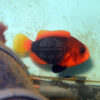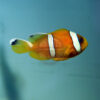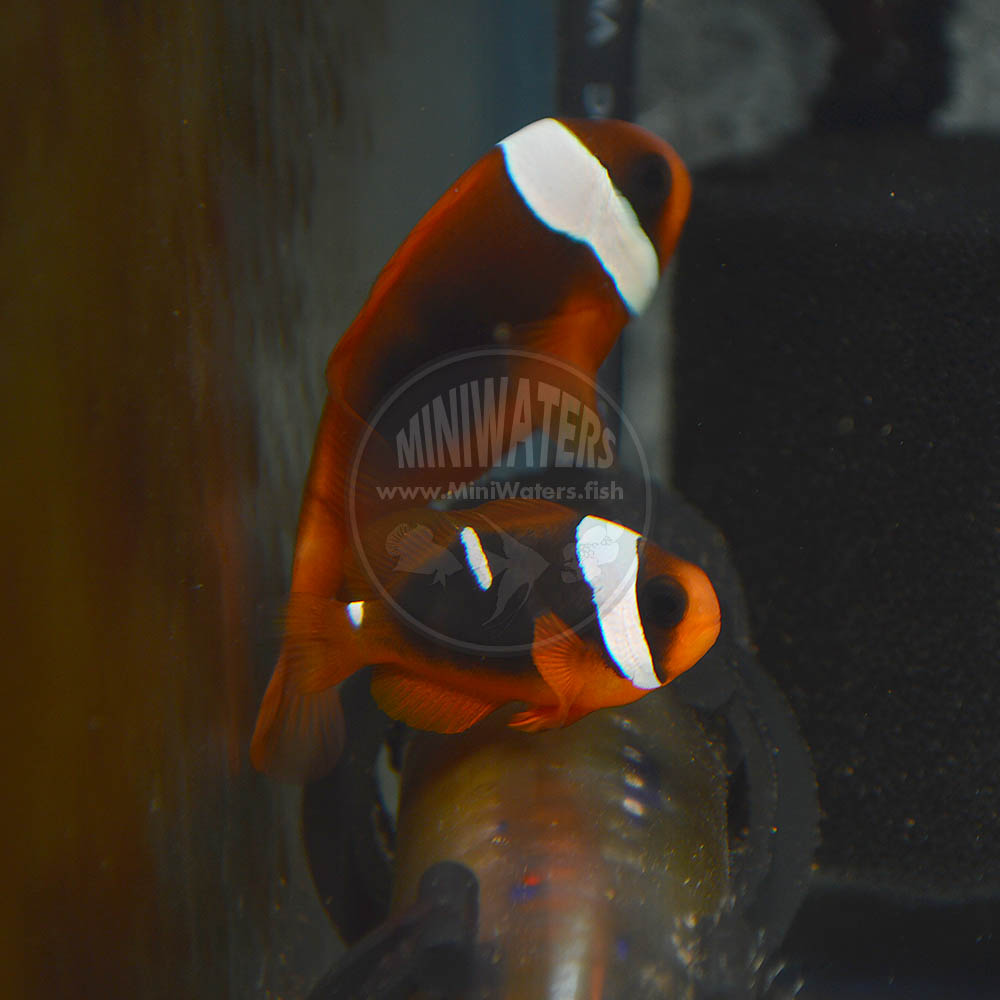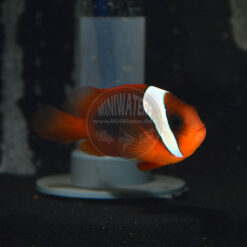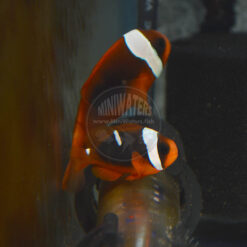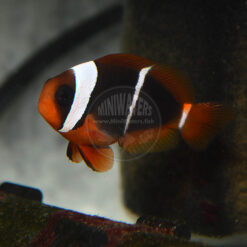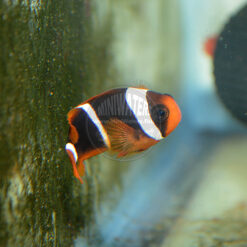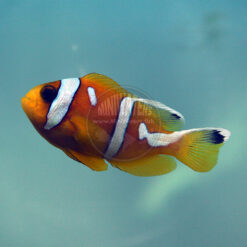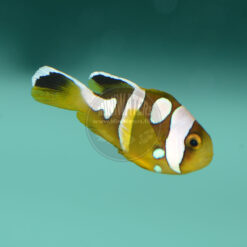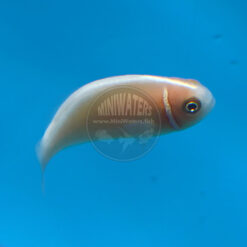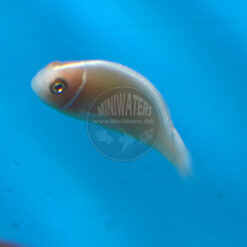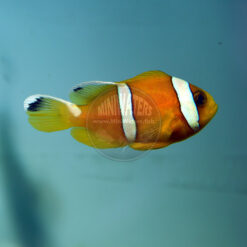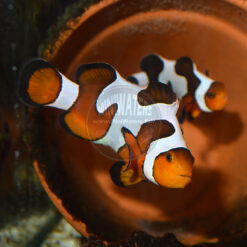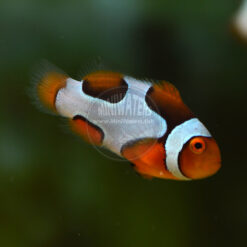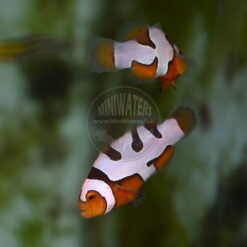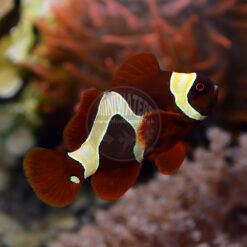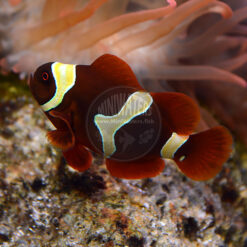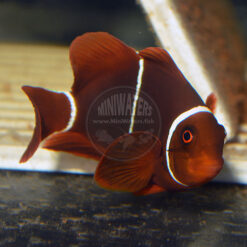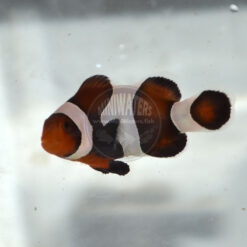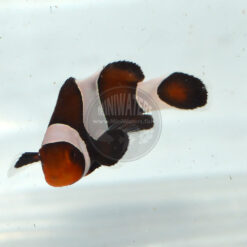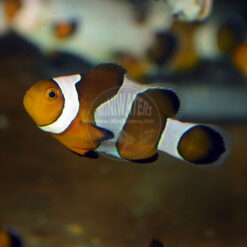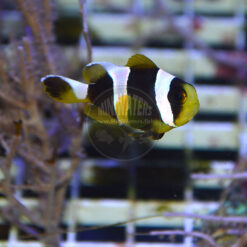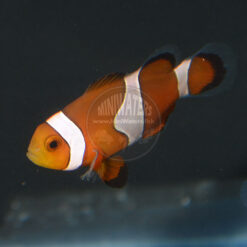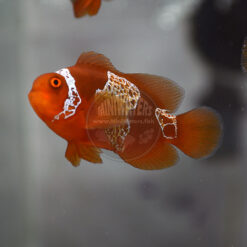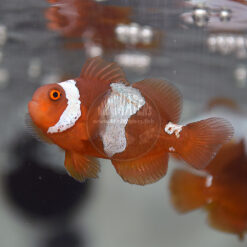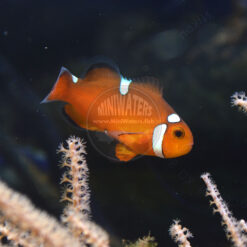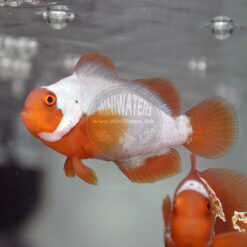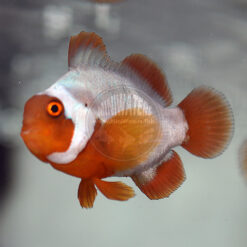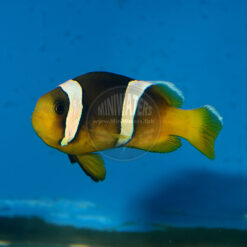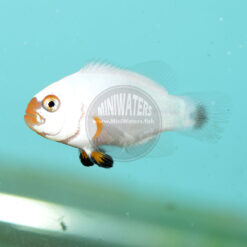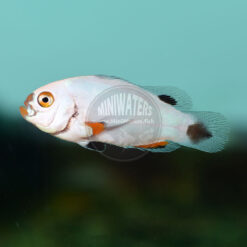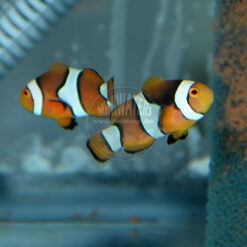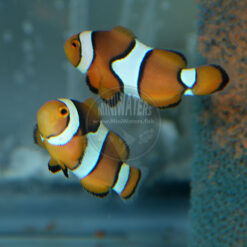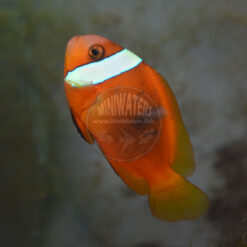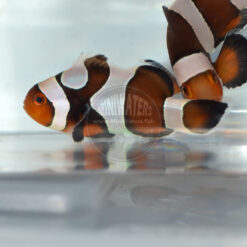Amphiprion rubrocinctus “Darwin” – Ruby Clownfish
$149.00 – $249.00Price range: $149.00 through $249.00
The true Ruby or Rubrocinctus Clownfish, Amphiprion rubrocinctus, hails from the northwestern coast of Australia. This species has a big identity crisis in the US trade, as the species we now know as Amphiprion barberi (from Fiji and Tonga) first entered the trade misidentified as A. rubrocinctus – most if not all of the “Rubrocinctus” seen in the US are probably actually A. barberi.
The real A. rubrocinctus is a very unique looking fish if you get to know it. Other than a couple verifiable specimens that may be held by institutions, it’s possible that no one else has the true, real Amphiprion rubrocinctus in the United States. If I’m able to import any more, I might consider doing so; the price I’ve included here is subject to change, and if anything, would probably go up. More likely, at some point I’ll be able to update this listing when I get some babies, but that could take a couple years!
Description
The true Ruby or Rubrocinctus Clownfish, Amphiprion rubrocinctus, hails from the northwestern coast of Australia. In theory it can be collected at both Darwin and Ningaloo Reef further west, and probably occurs on all reefs in between.
This species has a big identity crisis in the US trade, as the species we now know as Amphiprion barberi (from Fiji and Tonga) first entered the trade misidentified as A. rubrocinctus – most if not all of the “Rubrocinctus” seen in the US are probably actually A. barberi.. A. barberi was eventually thought to be a unique color form of the Cinnamon Clownfish, A. melanopus, and only more recently was it finally described as unique, new species. And yet to this day, wild Fijian “Rubrocinctus” can still be found on lists.
The reality of this identity crisis is that most, if not all fishes which were once sold and bred as “Rubrocinctus” are most likely the Barberi Clownfish, which means that the real Australia endemic, A. rubrocinctus, is probably not being brought into the US at all. To the average person, the Rubrocinctus is simply a “Tomoto Clownfish” which are one of the cheapest wild clownfish in the trade, so paying a large premium for an Australian “Tomato Clownfish” is probably absurd. Conversely, the species isn’t even regularly targeted for export by collectors in places where it occurs, which mean that getting my own hands on them required a certain amount of begging and a willingness to simply pay whatever the asking price was (and it was anything but cheap).
The real A. rubrocinctus is a very unique looking fish if you get to know it. All the wild A. rubrocinctus I received held their juvenile stripes far longer than most other species from the Tomato Complex, and as 1″ to 1.5″ fish, most showed THREE distinct bars. All the wild A. rubrocinctus juveniles I’ve acquired showed a unique patch at the top of the headstripe, where the front notches in ever so slightly and lacks the crisp black border that the rest of the headstripe carries; could this be a possible identifying trait (along with several other coloration-based traits)? At maturity, this species appears to be more chocolate brown than “black” on the flank, and the headstripe may disconnnect at the top, and may reduce to the point that the headstripe becomes more of a white cheek smudge akin to A. mccullochi, or may narrow down to a thin white line. Wild photos suggest that some fish can lose the headstripe completely; this could be a function of old age.
Other than a couple verifiable specimens that may be held by institutions, it’s possible that no one else has the true, real Amphiprion rubrocinctus in the United States. If I’m able to import any more, I might consider doing so; the price I’ve included here is subject to change, and if anything, would probably go up. More likely, at some point I’ll be able to update this listing when I get some babies, but that could take a couple years!
Related products
Clownfish
Clownfish
Clownfish
Clownfish


